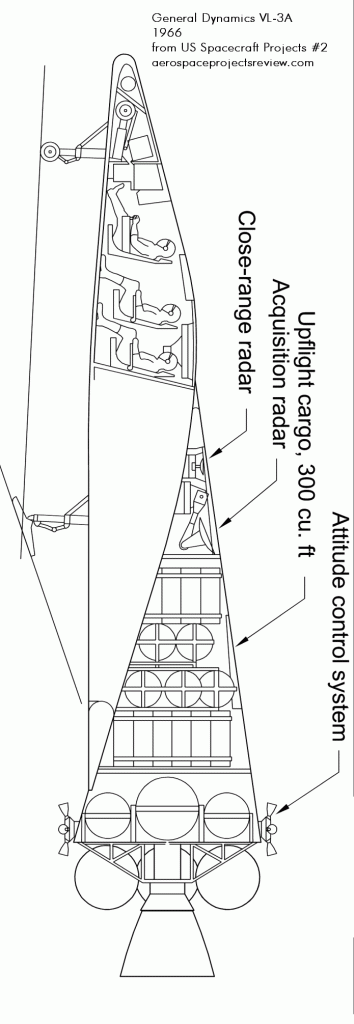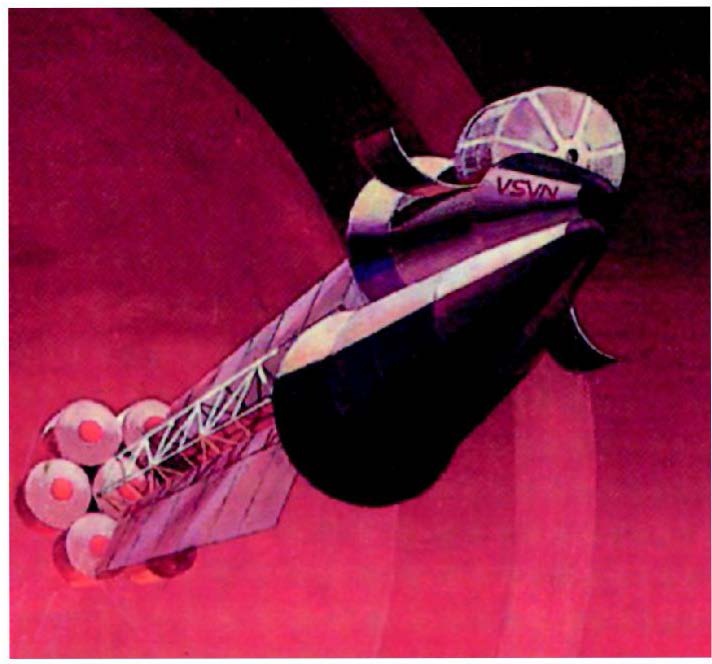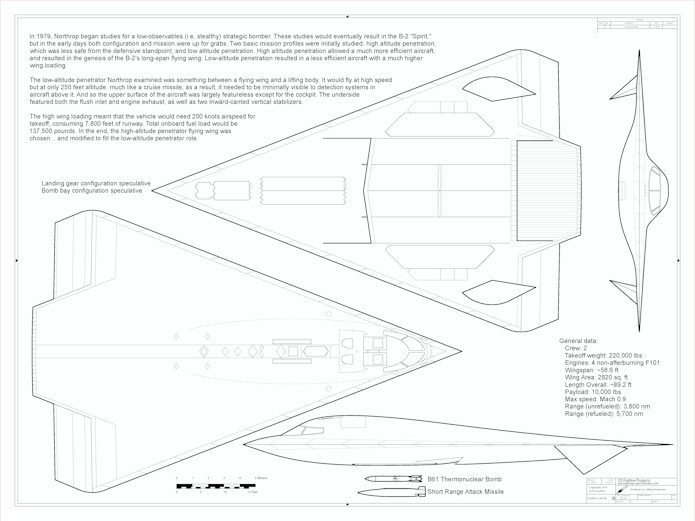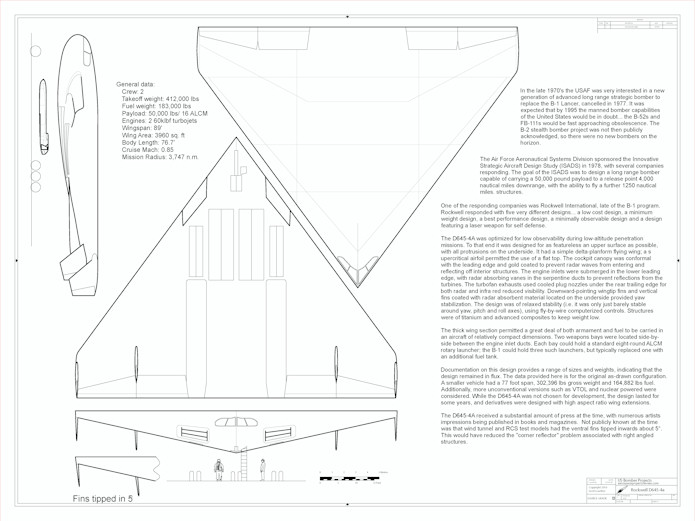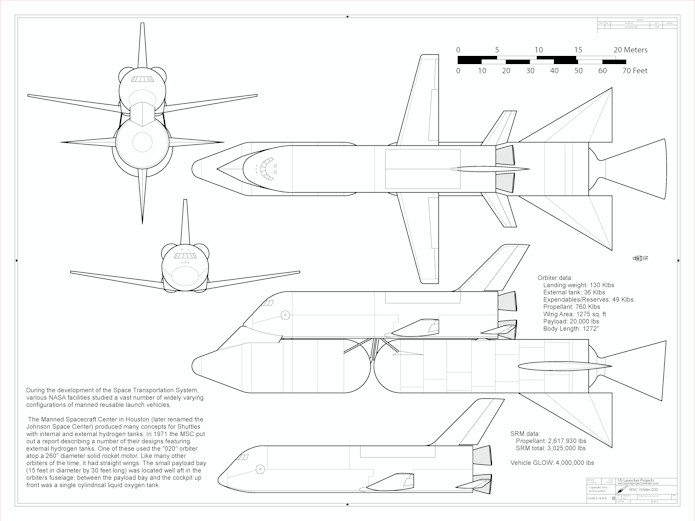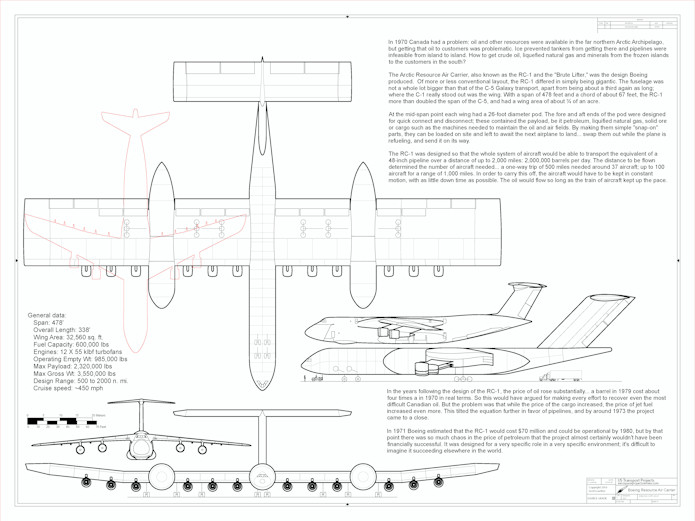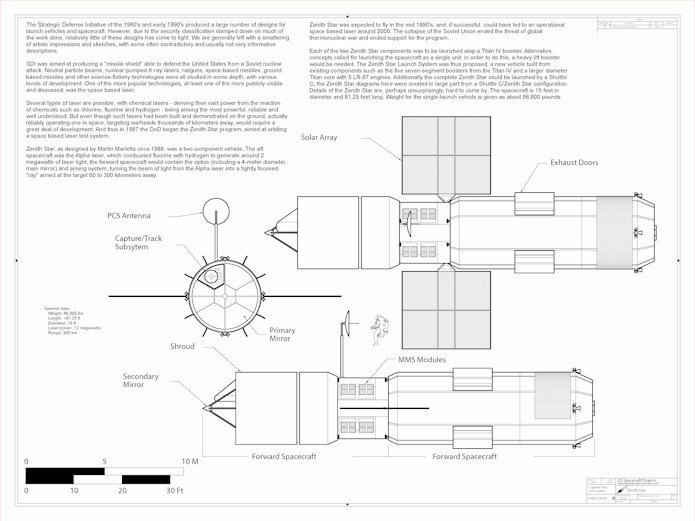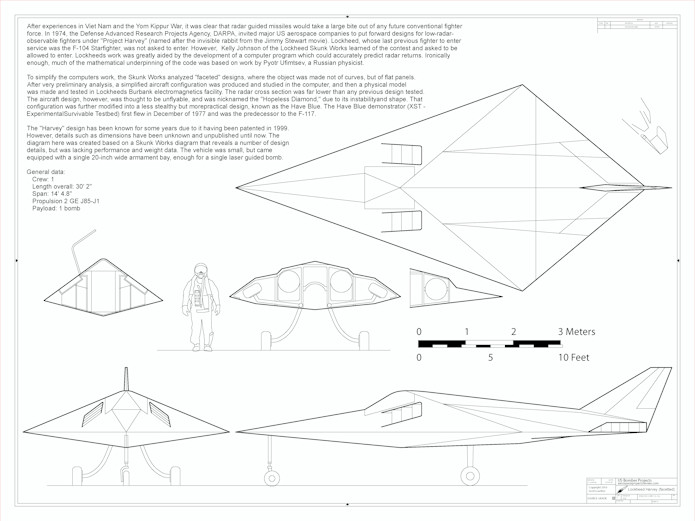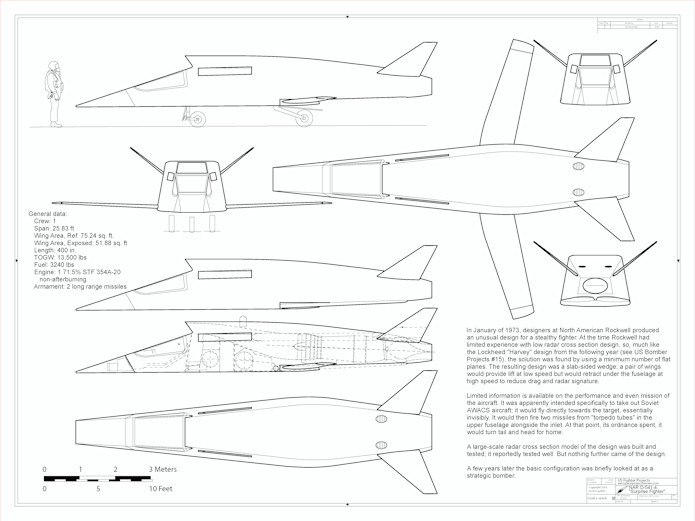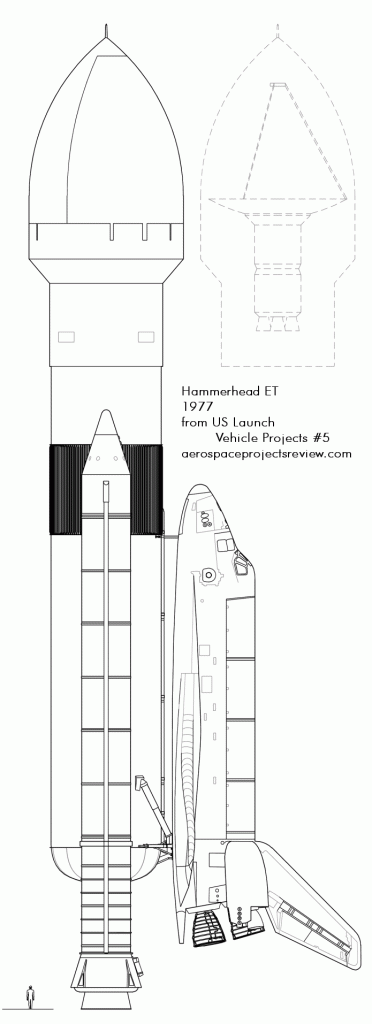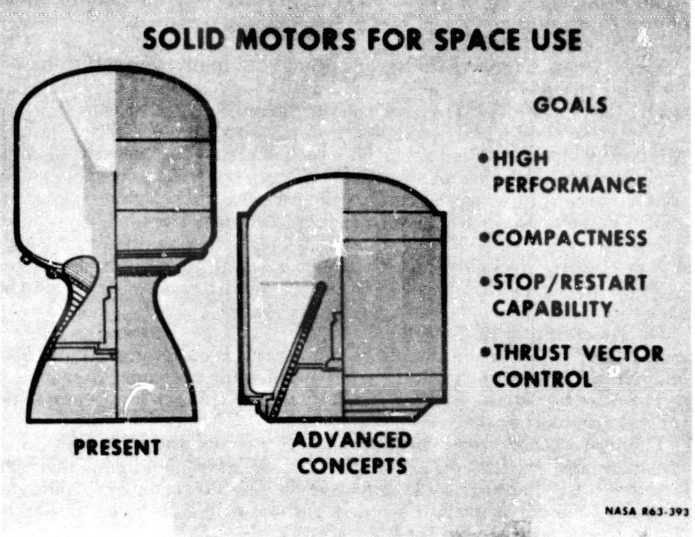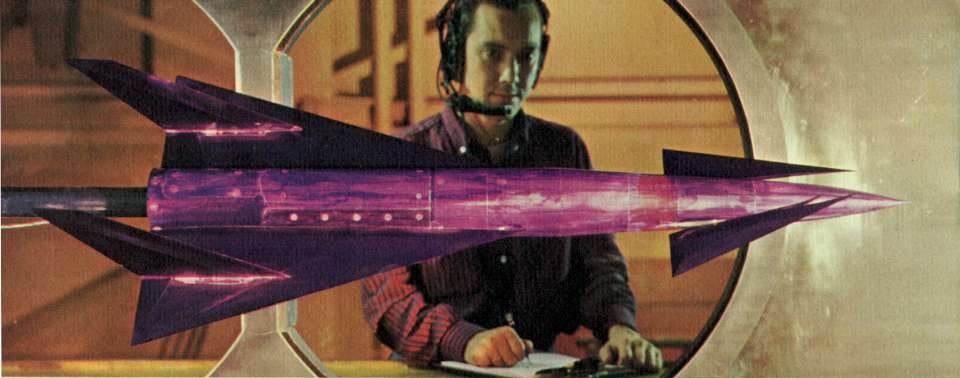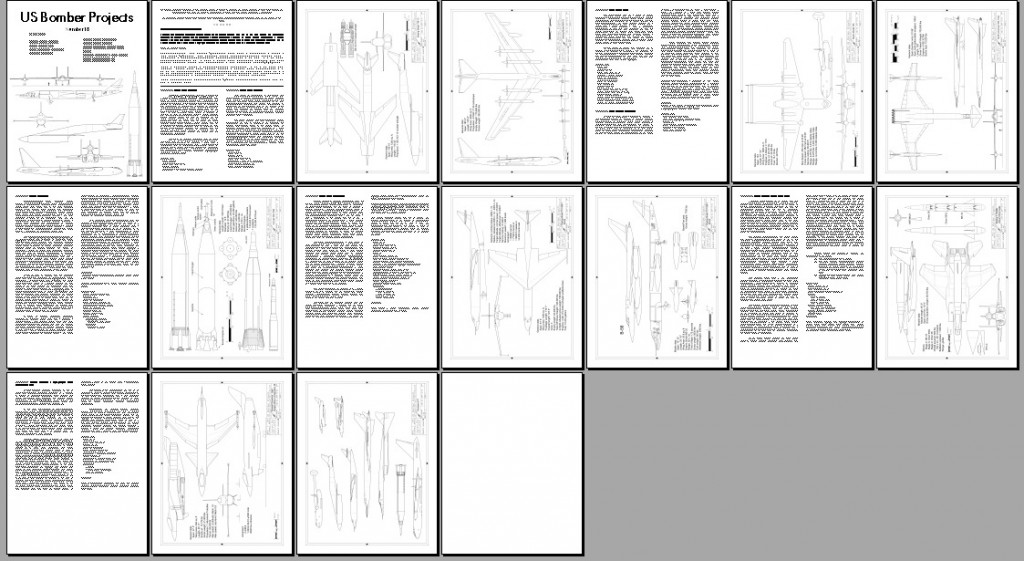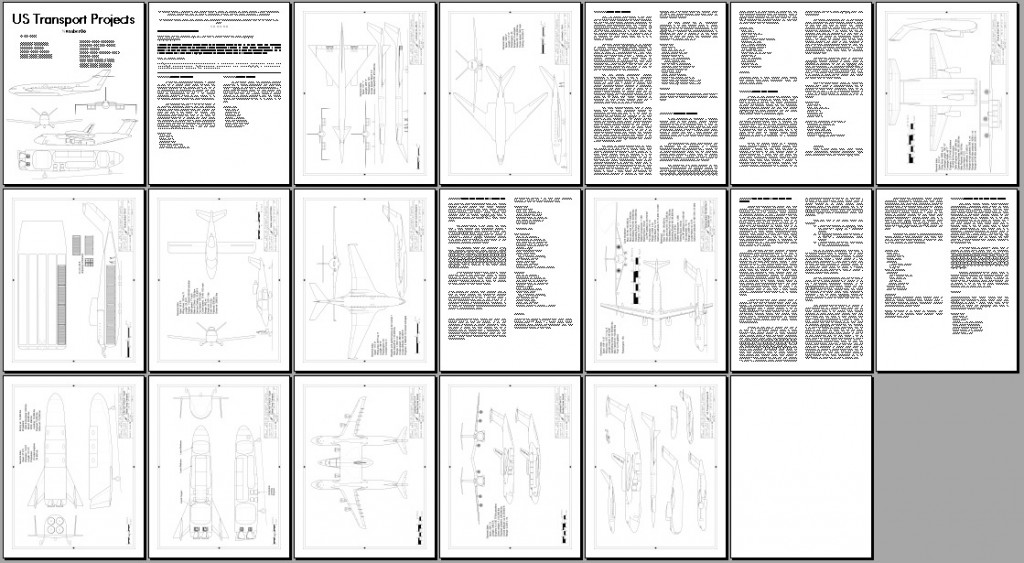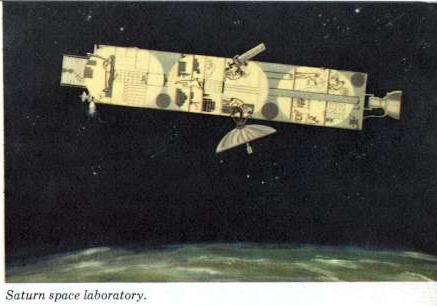A General Dynamics concept for a logistics spacecraft (personnel and cargo transfer to/from space stations) from 1966. The VL-3A was a narrow lifting body design to be launched by a Titan IIIc, and featured flip-out wings and turbojets for runway landings. The VL-3A and other spaceplanes were presented in US Spacecraft Projects #2.
This one is new to me… apparently the Germans used standard railway tracks and RATO-bottle-boosted sleds to launch replica Messerschmitt Me 163’s, with variable success. Given the fuel-hoggishness of the rocket plane, anything that would get them up to speed and into the air quickly would seem to be an advantage.
I’ve recently figured out how to get reliably good-quality vector graphic PDF files from my AutoCAD diagrams.These differ from standard “raster” graphics like GIFs and JPGs in that they are composed of scalable lines rather than pixels; this means that they can be printed off at many scales and they’ll retain clarity.
I think a lot of the diagrams would look quite good printed in large format; I’ve previously mentioned that I’m working on a few diagrams specifically for printing off on large format (24X36) mylar, but I’ve others that I think would also look good scaled for 18X24. I’m making these first seven diagrams available, formatted and scaled for 18X24. They can be viewed on screen, printed on a standard printer or printed by a large format printer all with equal clarity.
If this idea appeals, be sure to tell your friends, family, foes, anyone you think might be interested. Also be sure to comment if there are any diagrams I’ve previously created for APR, USXP or elsewhere that you’d like to see in this format. Some of them would be best as multi-sheet diagrams. Suggestions on how to improve also appreciated.
CAD 007: Northrop Low Altitude Penetrator
A 1/72 diagram of a 1979 design for a B-2 alternate configuration
Download for $3
———————————
CAD 006
A 1/96 scale diagram of the 1979 Rockwell D645-4a spanloader bomber.
Download for $3
CAD 005
A 1/144 scale diagram of the Manned Spacecraft Center MSC Orbiter 020, a 1972 Space Shuttle concept with a single 260″ solid rocket booster.
Download for $3
CAD 004
A 1/350 scale diagram of the 1971 Boeing Resource Air Carrier (AKA RC-1, AKA “Brute Lifter”) designed as a flying oil tanker for the arctic.
Download for $3
CAD 003
A 1/72 scale diagram of the Martin-Marietta “Zenith Star” experimental space-based laser for the Strategic Defense Initiative.
Download for $3
CAD 002
A 1/24 diagram of the Lockheed “Harvey,” the initial concept for a low radar cross section strike platform that eventually became the F-117.
Download for $3
———————————
CAD 001
A 1/32 diagram of the North American Rockwell D-541-4 “Surprise Fighter” from 1973, an early stealth concept designed to sneak up on Soviet AWACS planes.
Download for $3
Download all seven for $18.90 (10% off)
SpaceX’s successes with the Falcon 9 is forcing the rest of the launch industry to come up with new ideas. Orbital Sciences has released a bit of info on the Next Generation Launcher, which is based on a Space Shuttle booster first stage with a new Blue Origin third stage (which *might* indicate that the third stage is to be recoverable). And like Falcon 9, the NGL is designed with a heavy version… which has not only a pair of solid strap-on boosters, but a different first stage solid rocket.
Can’t say as that really make a whole lot of sense to me. But I guess we’ll see. First, we’ll see if OSC is truly serious about this, and they actually forge ahead.
Orbital ATK's John Steinmeyer: Proposed next-gen launcher is three stages, crowned with Blue Origin BE-3 third stage pic.twitter.com/JtQvIrJ5tL
— Stephen Clark (@StephenClark1) May 24, 2016
With luck a clearer version of this chart will be made public.
A 1977 Rockwell concept for how to expand the utility of the Shuttle system: move the payload from the Orbiter and put it in a shroud ahead of the External Tank. This would have allowed for much larger-diameter payloads to be carried. The ET would of course have had to go into orbit with the Orbiter itself. More info and diagrams of this are in US Launch Vehicle Projects issue 1.
A NASA illustration of an advanced solid rocket motor concept, dated 1963. The most obvious difference between the “present” and “advanced” design was the buried nozzle. By properly shaping the solid propellant grain, the motor would perform normally but with a minimum of unused internal volume; this allowed the motor to be substantially shorter than the conventional design. This would make the associated interstage section equivalently shorter, lighter and cheaper. And by shortening and lightening the interstage, the launch vehicle would be shorter, lighter and stronger, with slightly sturdier structural dynamics.
The advantages of a more compact motor like this are pretty obvious. The disadvantages, maybe less so. The most apparent disadvantage is the *need* for far more advanced materials. That buried rocket nozzle is shown to be quite thin, thinner than the “present” design, yet it would be subjected to horrifying heating rates on *both* sides. There are few materials that could withstand that and retain any sort of structural strength.
Additionally: the desire is shown for thrust vectoring. Numerous options for that are available for the conventional nozzle… but it would be much harder with a buried nozzle. It might be easiest to simply gimbal the entire motor. Stop/restart capability has been achieved with solid rockets, but neither design show here provides for that. It is a non-trivial feature.
The igniter is show to be a small rocket motor suspended within the nozzle, directing it’s exhaust forward into the bore volume of the main motor. Variations on this sort of igniter are quite common for relatively short and stubby upper stage motors such as these.
A photo of a NASA wind tunnel model of a hypersonic aircraft configuration. The circa 1960 NASA brochure (promoting the organization to college students) that included this provided no further information, but I’m reasonably sure I’ve seen the wind tunnel test report on this, calling it a reusable booster or reusable launch vehicle. If that’s the case, the upper stages and payload were *probably* going to be carried on the things back.
Now available: two new US Aerospace Projects titles.
US Bomber Projects #18
US Bomber Projects #18 is now available (see HERE for the entire series). Issue #18 includes:
- Boeing Model 726-13: A nuclear pwoered bomber with the cockpit in the tail
- Martin Model 164: A pre-war high altitude twin-tailed bomber
- North American WS-110A: An early concept for what became the B-70, with “floating wingtips”
- Convair MX-1593: An Early, large five-engined Atlas ICBM concept
- Boeing Model 701-299-1: The final XB-59 supersonic bomber design
- Boeing Model 464-72: A B-52 with pusher turboprops
- Boeing F-15GSE Global Strike Eagle: An unmanned F-15 with a giant missile on its back General Dynamics – Light Weight Attack Configuration 29: An advanced ground attacker with vectored thrust
USBP #18 can be downloaded as a PDF file for only $4.25:
——–
——
US Transport Projects #6
US Transport Projects #06 is now available (see HERE for the entire series). Issue #06 includes:
- Lockheed CL-408-15: An early Mach 3 SST
- Lockheed L-155-4: A very early 8-engine jetliner
- Boeing Model 754-4V: A very-wide-bodied cargo hauler for Husky
- Gates Learjet PD1502A: A four-seater with a turbofan
- Convair Comet Seaplane: An American idea for turning a British jetliner into Flying Boat
- Lockheed Twin C-5 Shuttle Carrier Aircraft: Two C-5’s mated together to carry a Shuttle between them
- Boeing Model 765-096 Rev A “SUGAR Volt”: A hybrid jetliner
- CRC HOT EAGLE – Super Global Troop Transport: Finally, hard data on a rocket transport for Special Forces and Marines
USTP #06 can be downloaded as a PDF file for only $4.25:
——–
——
And don’t forget…
US Fighter Projects #1 and US VTOL Projects #1 are still new and still available!
A sadly tiny illustration of a “Saturn Space Laboratory” from a circa 1960 NASA brochure (promoting the organization to college students). This looks like something halfway between MOL and Skylab; three pressurized modules in a “wet lab” space station. Diameter looks to be 10 feet, same as the Titan booster; early concepts for the Saturn called for the use of the Titan first stage to be the second stage of the Saturn I, with the second stage of the Titan being the third stage of the Saturn. This may well represent a Titan I or II first stage/Saturn I second stage as a space lab.
Given the entertainingly toxic nature of the Titan II propellants, I’d guess this was an earlier Titan I-based concept.
